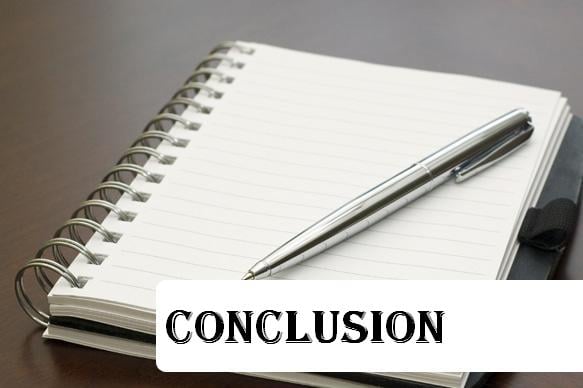What is a literary analysis, and what is it good for?
Please don’t reply, “Absolutely nothing, say it again y’all!”
You might think that a literary analysis isn’t good for anything, but it actually helps sharpen your writing skills and your critical thinking abilities.
If you can write a stunning literary analysis, you have a pretty good chance of doing well in your literature course, too, so that’s definitely a bonus!
This all sounds great, right, but what do you do if you’re not quite sure how to even start? If you’re in need of a little help, you’ve come to the right place. I’m here to explain how to write a literary analysis that works.
What Is a Literary Analysis?

A literary analysis is quite simply an analysis of a piece of literature. Makes sense, right?
Your goal is to carefully examine a piece of literature. To do this, you need to break it into smaller pieces. This will help you understand the writing as a whole.
As you read, pay close attention to what characters say and do. Even a small action or comment can be significant. For example, consider how the simple phrase, “Out, damned spot; out, I say” reveals Lady Macbeth’s guilt and descent into madness.
Also pay attention to (and actively look for) the literary terms you’ve learned about in class. You know, terms like plot, character, foreshadowing, symbolism, and theme.
Remember: even though plot can be an important component of a literary analysis, a literary analysis is not a plot summary.
Let me say that again for emphasis: A literary analysis is not a plot summary.
Don’t write a paper that explains every single plot point of the story. While it may be appropriate to include a brief summary of the literature, the summary shouldn’t be the focus of your essay.
Remember, you’re analyzing a key element of the literature. You’re not telling your friend what happens in the story.
Here’s a mini literary analysis example to help explain what I mean.
Let’s look at Shirley Jackson’s short story “The Lottery”.
Need inspiration? Check out these example essays on “The Lottery.”
Here’s a plot summary. It tells you what happens in the story. This is not a literary analysis.
In “The Lottery,” villagers gather to draw the name of the person who will win the lottery. Here’s the kicker though, the person doesn’t win a million dollars, as might be the case with a modern story of this title. Instead, the person who wins the lottery is stoned to death by the rest of the villagers to ensure a good harvest. This isn’t a lottery that anyone would want to win.
Here’s the start to a good literary analysis. This example chooses a small element of the story (the black box) and explains its importance (what the box symbolizes).
While a simple box may not seem to matter, when you look at it in the larger context of the story, you’ll see that the shabby black box, which holds the slips of paper with each villager’s name, is actually an important symbol.
Notice that the box is black. Black symbolizes death. The box is old and worn out, yet the villagers won’t replace it. This symbolizes the tradition of the lottery. It, too, is old and dated, yet villagers cling to the tradition.
See the difference? A summary simply retells the plot, while an analysis explains and analyzes an important element of the story.
Read: How to Write a Good Essay: Stop Summarizing, Start Commentating
Ready to move on to a more detailed, step-by-step explanation? Great! Let’s get to work!
How to Write a Literary Analysis That Works
1. Read the literature carefully
I know this is a basic step, but my point here is that you should actually read the material. Don’t rely on Spark Notes or Shmoop. These sites can be helpful in understanding material, but they’re no substitute for actually reading the original text (even if you do have to read all 500 pages of The Lord of the Rings).
2. Review literary terms, and take notes as you read
It can be hard to remember every detail of a story or find a specific quote in a 500 page novel. Save yourself time and the frustration of pouring through each page again by writing down your thoughts, asking questions, and highlighting important information.
Remember when I mentioned literary terms? Here’s where you’ll take notes about those, too.
If the book is titled The Lord of the Rings and you notice that the ring plays an important role in the novel, chances are that ring is a symbol of something. Take notes about the ring as you read (noting page numbers!), so you’ll be able to use the ideas to support your analysis.
3. Understand your assignment
In some cases, writing a literary analysis means you’re writing your own original analysis and won’t need any additional sources to support your claims.
Some assignments will require you to complete research and use outside expert analysis to support your ideas.
These are two different assignments, so before you begin, make sure you’re writing the right type of paper!
4. Introduction and Thesis Statement
Reach out and grab your readers! Not literally, of course. But an introduction should grab readers’ attention and make them want to keep reading.
If you’re writing a literary analysis without the help of sources, try opening with a question that you’ll answer in your paper.
Here’s an example: The symbols of light and dark are prominent throughout literature, but what unique role do these seemingly common symbols play in The Lord of the Rings?
If you’re using outside research, try opening with an interesting or shocking quote from a source.
Here’s what an opening line of a literary analysis of The Lord of the Rings might look like if you’re using sources.
J.R.R. Tolkien’s The Lord of the Rings was published in 1954-1955 and “…has been hailed by many literary critics as a classic work of literature, one of the best—or the best—of the twentieth century” (McPartland 1).
After you introduce your topic in the introductory paragraph(s), you’ll wrap up the introduction with a clear and specific thesis statement.

The thesis statement functions like a mini road map of your paper and tells your readers the subject and focus of your paper. (To learn more about thesis statements, read How to Write a Thesis Statement in 5 Simple Steps.)
Check out these thesis statement examples you might use for a literary analysis of The Lord of the Rings.
Sample Thesis Statement #1: The key symbol in The Lord of the Rings is the ring itself, as it symbolizes power.
Sample Thesis Statement #2: Upon close reading, a number of themes emerge from The Lord of the Rings; however, one of the primary themes is good versus evil.
These sample thesis statements provide readers with a specific focus, with the first example clearly focusing on symbolism and the second clearly focusing on theme.
Once you have written an appropriate thesis statement, you have a direction for your paper and are ready to begin the actual analysis.
5. Analyze Literary Devices
Now’s the time to take a look at your notes again and review the observations you made about literary devices, such as theme, symbol, and character.
Break down the literature by examining each of these literary elements to see what role they play.
It’s a lot like putting together a jigsaw puzzle. You need to examine each piece individually to see how it forms the larger picture.
Let’s look at an example.
Here’s a working thesis statement: The key symbol in The Lord of the Rings is the ring itself, as it symbolizes power.
In this paper, you’ll focus on symbolism.Your literary analysis needs to create an argument and explain to readers how the ring symbolizes power. To do this, you’ll of course need specific examples from the novel.
Because the ring is a changing symbol throughout the story, you can provide a number of examples. For instance, the ring is a symbol of evil power. The ring also symbolizes a desire for power.
Here’s another working thesis statement: Upon close reading, a number of themes emerge from The Lord of the Rings; however, one of the primary themes is good versus evil.
In this paper, your focus is theme. Your literary analysis, will provide readers with examples to help explain the importance of the theme good vs. evil in the novel.
Throughout The Lord of the Rings, characters are in a constant battle of good and evil. The ring was created by evil and continually tempts even the most good and honest characters. Your analysis will include specific examples of characters being tempted, their struggles with good and evil, and their ultimate end of succumbing to the darkness of evil.
6. Conclusion
Every good essay ends with a good conclusion.
Wrap up your literary analysis by summing up your main ideas and restating your thesis (using different wording than your original thesis statement, of course).
If you’re writing about the symbolism of the ring in The Lord of the Rings your conclusion will restate the importance of the ring as a symbol of power and how that symbol is carried throughout the entire novel.
Include a few key points of your analysis, such as how the ring symbolizes evil power as well as a desire for power.
Your final lines will bring the essay to closure. As a concluding strategy, you might connect your opening and closing lines of your essay.
For instance, in the example above, I quoted a source that mentions the quality of the novel and its importance in literary history. Your concluding lines might restate this idea to emphasize the point.
Final Thoughts on How to Write a Literary Analysis
Learning how to write a literary analysis takes practice–and revision. Don’t expect to quickly read a story and whip up your paper during Mad Men commercial breaks.
Budget your time wisely. Allow time for yourself to read (and possibly reread) the literature. Take notes as you read. And make sure to organize and draft your ideas carefully.
If you want to learn even more about literary analysis before you start your paper, read 8 Components of a Smart Literary Analysis.
If you’re having trouble deciding which literary device to focus on, I recommend taking a look at this detailed list of literary devices, which includes definitions and plenty of examples.
Ready to have someone else review your analysis? Kibin editors are always ready to help!

